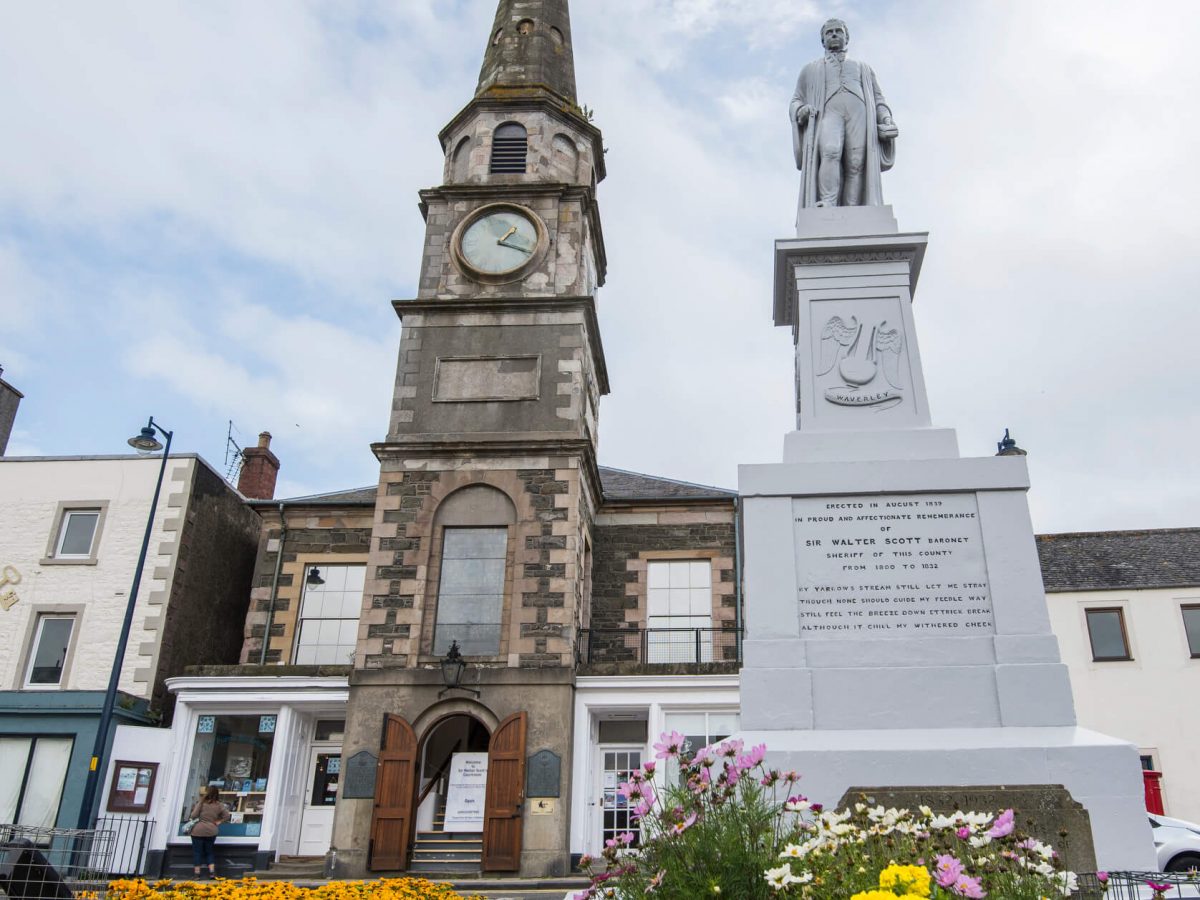

William Wallace
William Wallace
Wallace’s fame arguably started after his defeat of the English during the Scottish Wars of Independence at Stirling Bridge in 1297. Although vastly outnumbered, the Scottish army routed the English army, using tactics to exploit the narrowness of the bridge. While the English soldiers crossed, the Scots held back until half of them had passed and then killed the English as quickly as they could cross. A pivotal charge caused some of the English soldiers to retreat as others pushed forward, and under the overwhelming weight, the bridge collapsed and many English soldiers drowned. The Scots thus won a significant victory, boosting the confidence of their army.
It is believed that the Auld Kirk in Selkirk is the spot where William Wallace, was proclaimed ‘Guardian of Scotland’ in 1298.
Wallace evaded capture by the English until 5 August 1305, when John de Menteith, a Scottish knight loyal to Edward 1 of England, turned Wallace over to English soldiers at Robroyston near Glasgow. Wallace was executed by Edward 1 at Smithfield in London, and a plaque stands in a wall of St. Bartholomew’s Hospital nearby. It includes the Latin words “Dico tibi verum libertas optima rerum nunquam servili sub nexu vivito fili” (“I tell you the truth. Freedom is what is best. Sons, never live life like slaves.”).
Not a great deal more is known about William Wallace’s life, although it seems to be established that he used the Ettrick Forest as a base for raids across the Borders, as part of the Scots rebellion against Edward 1’s invasion of Scotland in 1296. An imposing red sandstone statue of Wallace was erected in 1814 near Bemersyde and Dryburgh Abbey, standing 31 feet high (9.4 m) and is worth a visit.





